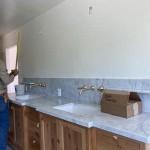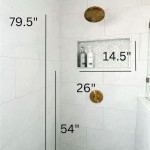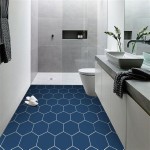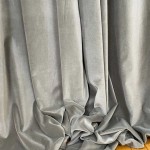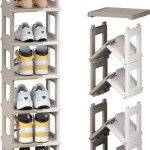Best Laminate Flooring for Radiant Heat: A Comprehensive Guide
Radiant heating systems offer a comfortable and energy-efficient way to warm a home. Unlike forced-air systems that can circulate dust and allergens, radiant heat provides consistent warmth from the floor up, creating a cozy and even temperature throughout the room. When considering radiant heat, selecting the right flooring material is crucial to ensure optimal performance and longevity of the system. Laminate flooring, known for its durability and affordability, can be a viable option for radiant heat, but careful selection is paramount.
This article delves into the key considerations for choosing the best laminate flooring for radiant heat systems, exploring the factors that influence heat transfer, product selection criteria, installation best practices, and potential pitfalls to avoid. The aim is to provide homeowners and contractors with the information needed to make informed decisions about combining laminate flooring and radiant heat for a successful and comfortable living space.
Understanding Radiant Heat Compatibility in Laminate Flooring
Not all laminate flooring is created equal when it comes to radiant heat compatibility. The primary concern is the flooring's ability to conduct heat efficiently without warping, buckling, or releasing harmful chemicals. Several factors influence this compatibility, including the core material, thickness, and the type of radiant heat system employed.
Laminate flooring typically consists of four layers: a wear layer, a decorative layer, a core board, and a backing layer. The core board, usually made of high-density fiberboard (HDF) or medium-density fiberboard (MDF), plays a significant role in heat transfer. HDF generally performs better than MDF due to its higher density and lower moisture content, making it more resistant to expansion and contraction under varying temperatures. However, the quality of the HDF itself can vary, so it's important to look for reputable brands with established manufacturing standards.
The thickness of the laminate flooring also affects its ability to conduct heat. Thicker flooring generally requires more energy to heat up and may take longer to reach the desired temperature. Thinner laminate flooring, typically in the 8mm to 10mm range, tends to be more efficient in transferring heat. However, thinner flooring may also be more susceptible to impact damage and may require a more level subfloor. Finding the right balance between thickness, durability, and heat transfer efficiency is key.
The type of radiant heat system also influences the choice of laminate flooring. Hydronic systems, which circulate heated water through pipes embedded in the floor, generally provide a more consistent and even heat distribution compared to electric systems, which use heating cables. Electric systems can create "hot spots" if not properly installed, potentially leading to uneven heating and increased stress on the laminate flooring. Therefore, selecting a thicker, more durable laminate is often recommended for use with electric radiant heat systems.
Key Considerations for Selecting Radiant Heat-Compatible Laminate Flooring
Choosing the right laminate flooring for radiant heat requires careful consideration of several key factors. Focusing solely on aesthetics can lead to problems down the line. Instead, prioritize technical specifications, manufacturer recommendations, and installation guidelines.
Heat Resistance and Thermal Conductivity: Look for laminate flooring specifically designed and labeled as "radiant heat compatible." Manufacturers typically test their products and provide information on their suitability for use with radiant heating systems. Pay attention to the thermal resistance (R-value) of the flooring; a lower R-value indicates better heat transfer. While a lower R-value is desirable for radiant heat, it's important to balance this with the need for adequate insulation and comfort. The manufacturer's specifications should outline the maximum surface temperature the flooring can withstand without damage.
Dimensional Stability: Laminate flooring expands and contracts with changes in temperature and humidity. This movement can be exacerbated by radiant heat, potentially leading to gaps, buckling, or warping. Choose laminate flooring with high dimensional stability, meaning it is less prone to expansion and contraction. Look for products with tight locking systems that minimize movement between planks. Acclimation is essential; allow the laminate flooring to acclimatize to the room's temperature and humidity for at least 48 to 72 hours before installation. This allows the flooring to adjust to its environment, reducing the likelihood of movement after installation.
Formaldehyde Emissions: Some laminate flooring contains formaldehyde, a volatile organic compound (VOC) that can be released into the air. Radiant heat can increase the rate of formaldehyde emissions, potentially posing health risks. Choose laminate flooring with low or no formaldehyde emissions, certified by recognized organizations like CARB (California Air Resources Board) or FloorScore. These certifications ensure that the flooring meets stringent emission standards, contributing to a healthier indoor environment.
Warranty and Manufacturer Support: Select laminate flooring from reputable manufacturers that offer comprehensive warranties covering radiant heat compatibility. Read the warranty carefully to understand the terms and conditions, including any limitations or exclusions. A reliable manufacturer will provide technical support and guidance on installation best practices, ensuring that the flooring performs as expected with the radiant heat system.
Installation Best Practices for Laminate Flooring Over Radiant Heat
Proper installation is critical to the successful integration of laminate flooring and radiant heat. Even the best laminate flooring will perform poorly if installed incorrectly. Following manufacturer's instructions meticulously and paying attention to detail are crucial for preventing problems.
Subfloor Preparation: The subfloor must be clean, level, and dry before installing laminate flooring over radiant heat. Any imperfections in the subfloor can create uneven pressure on the flooring, leading to premature wear and tear. Use a self-leveling compound to correct any irregularities and ensure a smooth surface. Moisture is the enemy of laminate flooring, so thoroughly test the subfloor's moisture content before installation. Use a moisture meter to verify that the subfloor meets the manufacturer's specifications. Install a moisture barrier if necessary to prevent moisture from migrating into the laminate flooring.
Expansion Gaps: Laminate flooring needs room to expand and contract with changes in temperature and humidity. Leave adequate expansion gaps around the perimeter of the room and around any vertical obstructions, such as pipes or door frames. The manufacturer's instructions will specify the required expansion gap, typically between 1/4 inch and 3/8 inch. Use spacers to maintain consistent expansion gaps during installation. These gaps will be covered by baseboards or quarter-round molding after installation.
Direct Contact with Heating Elements: Ensure that the laminate flooring does not come into direct contact with the heating elements of the radiant heat system. Use a suitable underlayment specifically designed for radiant heat to create a thermal break between the flooring and the heating system. This underlayment will help to distribute heat evenly and prevent hotspots. Avoid using thick or heavily insulated underlayments, as they can impede heat transfer. Choose an underlayment with a low R-value to maximize the efficiency of the radiant heat system.
Acclimation: As previously mentioned, proper acclimation is essential. Unpack the laminate flooring and spread the planks out in the room where they will be installed for at least 48 to 72 hours. This allows the flooring to adjust to the room's temperature and humidity, minimizing expansion and contraction after installation. Maintain a consistent temperature and humidity level in the room during acclimation.
Following Manufacturer's Instructions: Always follow the manufacturer's instructions for installation. These instructions will provide specific guidance on the proper installation techniques, expansion gaps, and underlayment requirements. Deviating from the manufacturer's instructions can void the warranty and lead to problems with the flooring's performance.
Professional Installation: While it is possible to install laminate flooring over radiant heat as a DIY project, consider hiring a professional installer with experience in this type of application. A professional installer will have the knowledge and expertise to properly prepare the subfloor, install the flooring correctly, and ensure that the radiant heat system is working optimally.
By carefully considering these key factors and following proper installation practices, homeowners and contractors can successfully combine laminate flooring and radiant heat for a comfortable and energy-efficient living space. Selecting the right materials, preparing the subfloor properly, and following the manufacturer's instructions are essential for a long-lasting and trouble-free installation.
.jpg?strip=all)
The Best Types Of Flooring For Radiant Heating

Laminate Flooring Over Radiant Heat Shaw Floors

Heated Vinyl Plank Flooring Everything You Need To Know

The Best Types Of Flooring For Radiant Heating

Heating Wood Floors 101 Everything You Need To Know Flooringstores

Heating Wood Floors 101 Everything You Need To Know Flooringstores

Best Underlayment For A Heated Floor Flooring

Best Types Of Flooring With Radiant Heat Home Pros

Heated Vinyl Plank Flooring Everything You Need To Know

What Is The Best Flooring For Underfloor Heating Warmup

